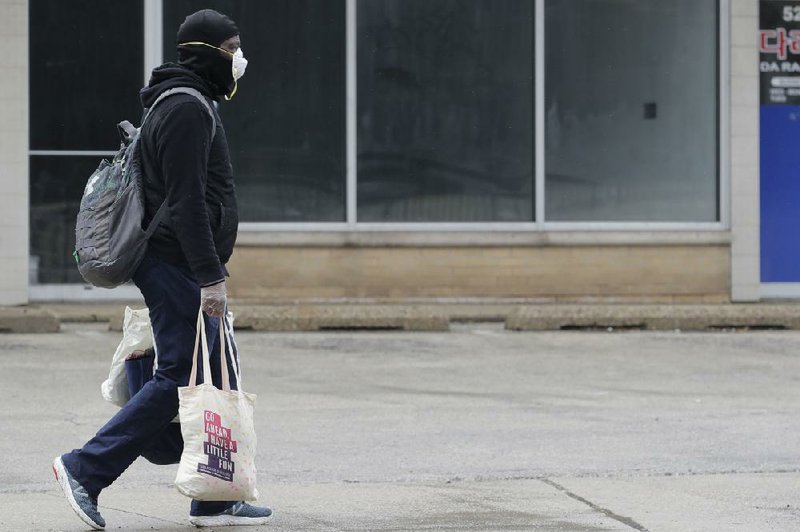The coronavirus pandemic is burrowing into America's battered industrial heartland and the South, bursting out in places like Detroit, Chicago and New Orleans that have legions of low-income residents with underlying medical conditions and few resources.
Michigan is fast becoming the next U.S. hot spot for the virus, registering new cases at more than triple the national rate; it was declared a federal disaster area late Friday night. The state had 4,650 covid-19 cases as of Saturday night -- versus zero just over two weeks ago -- ranking fifth in the nation. Of that, impoverished Detroit and surrounding Wayne County made up half. At least 111 people have died.
"I'm not astonished that we are seeing such an explosive curve," said Teena Chopra, a doctor who is an infectious disease specialist at Detroit Medical Center and a professor at Wayne State University. "What is happening in the rest of the world we are seeing in Detroit. And we should be more worried than anybody else, because our population is very vulnerable."
The coronavirus made its first appearance in America in places where international travel is common, and where significant swaths of the population are affluent and have access to medical care. Despite those advantages, medical defenses are buckling. The second wave of infection is striking cities far more vulnerable to begin with.
[CORONAVIRUS: Click here for our complete coverage » arkansasonline.com/coronavirus]
"We have been aggressive in terms of closing schools, bars and other gathering places," Michigan Gov. Gretchen Whitmer said in an interview. "Yet we continue to see covid-19 spreading quickly, especially through Detroit and southeast Michigan."
Detroit, which filed what was then the largest U.S. municipal bankruptcy in 2013, has almost 90,000 vacant parcels held by its municipal land bank. Despite a spruced-up and resurgent core, its 673,000 people are scattered over 139 square miles after the former industrial giant lost more than half its population since the 1950s. It's a landscape of vacant lots and vast tracts of boarded-up houses, many being reclaimed by nature.
About 36% of the population lives in poverty. With diabetes and hypertension rampant, Detroiters are prey to the new virus, Chopra said. In a city built by and for the automobile, they often lack transportation to get to the hospital. Many ignore early signs of the disease.
That's set the coronavirus racing through the state. Suburban Oakland County, the second-most-populous and the affluent seat of thousands of white-collar auto jobs, represents 23% of cases.
[Gallery not loading above? Click here for more photos » arkansasonline.com/329heartland/]
Other Midwestern cities are following the same trajectory. Cook County, Ill., which encompasses Chicago, saw cases rise to more than 1,900 Friday from 413 at the end of the previous week, according to data compiled by the University of Chicago. The county now accounts for three-quarters of the state's total.
Outbreaks in Louisiana, Arkansas and Tennessee also accelerated recently. Cases in Nashville's Davidson County quadrupled in a week, as did those in Orleans Parish, La. Such numbers may not reflect the precise case counts as shortages have made it difficult for sick people to get tested.
New Orleans, like many Southern cities, has a deep well of need. Almost a quarter of its residents fall below the federal poverty line.
Want breeds disease, said Joseph Eisenberg, chair of the epidemiology department at the University of Michigan's School of Public Health in Ann Arbor.
"People will go a lot longer since they don't have access to health care," he said. "That both means they've been in the community more and been transmitting more, and when they get to the hospital their prognosis is going to be a lot worse."
Michigan identified its first two covid-19 cases on March 10, both linked to either international or domestic travel. Since then, Whitmer has issued a slew of executive orders to contain the virus: school closures, a ban on large assemblies, and last Monday evening a shelter-in-place order that shuttered businesses and triggered mass layoffs across the state. But the number of cases is still growing.
What's worse, Whitmer said, is that the state may not know for weeks whether the health care system and her containment methods are working.
That means it could take even longer for carmakers, the state's economic lifeblood, to get going again.
A Section on 03/29/2020
